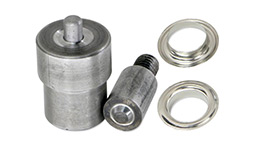
Jan . 02, 2025 01:20
Back to list
صمام منظم ضغط الغاز
Gas Pressure Regulator An Overview
A gas pressure regulator is a crucial device used in various industries and applications to control the pressure of gas. This device ensures that gases, including natural gas, propane, and other industrial gases, are delivered at a consistent and safe pressure. The importance of gas pressure regulators cannot be overstated, as they play a vital role in protecting equipment, ensuring safety, and maintaining efficiency in gas distribution systems.
How Gas Pressure Regulators Work
The primary function of a gas pressure regulator is to reduce the high inlet pressure of a gas to a lower, manageable outlet pressure. The setup typically involves two pressure points the inlet pressure, which is the pressure of the gas coming from the source (like a gas cylinder or pipeline), and the outlet pressure, which is the desired pressure for the application.
Gas pressure regulators operate based on the principles of pressure differential and equilibrium. They usually consist of a spring-loaded diaphragm that responds to changes in pressure. When gas flows into the regulator, it exerts force on the diaphragm. If the inlet pressure exceeds the set point, the diaphragm moves, which adjusts an internal valve to restrict gas flow, effectively reducing the output pressure. As the output pressure drops, the diaphragm moves back to its original position, allowing more gas to flow, thus maintaining a stable pressure.
Types of Gas Pressure Regulators
There are several types of gas pressure regulators, each designed for specific applications and requirements
1. Single-Stage Regulators These are simple, cost-effective models that regulate pressure in a single step. They are generally used for applications where precise pressure control is not critical.
2. Two-Stage Regulators Featuring two separate pressure control stages, these regulators provide more reliable and stable pressure control. They are suitable for applications where fluctuating inlet pressures are common.
3. Ultra-High Pressure Regulators Designed to handle high-pressure gas systems, these regulators can operate under extreme conditions, ensuring safety and performance.
4. Automatic and Manual Regulators Some regulators are equipped with automatic shut-off features, while others require manual adjustments. The choice depends largely on the application and operational needs.
صمام منظم ضغط الغاز

Applications of Gas Pressure Regulators
Gas pressure regulators are utilized across a wide range of industries, including
- Residential Uses In homes, regulators are integral to ensuring natural gas is delivered at the correct pressure for heating, cooking, and other applications.
- Industrial Processes Factories and manufacturing plants use regulators to control gases in processes such as welding, chemical production, and material processing.
- Medical Facilities Hospitals utilize regulators in oxygen delivery systems, ensuring that patients receive the correct flow and pressure of medical gases.
- Food and Beverage Industry In this sector, regulators are critical for processes involving gas in carbonation, cooking, and food preservation.
Importance of Safety and Maintenance
Given the potential hazards associated with gas, safety is a top priority when using gas pressure regulators. Regular maintenance and inspections are essential to ensure that regulators operate efficiently and safely. Users should check for leaks, ensure that all connections are secure, and verify that the pressure settings are within safe limits.
Moreover, understanding the specifications and operational limits of gas pressure regulators is crucial for optimal performance. Exceeding the manufacturer's recommended pressure differential can lead to equipment failure or hazardous situations.
Conclusion
Gas pressure regulators are indispensable tools that play a key role in ensuring the safe and efficient use of gases in various applications. By controlling the pressure of gases accurately, these devices not only protect equipment and processes but also enhance safety for users and workers. Investing in high-quality regulators and committing to regular maintenance can significantly improve performance and reduce risks associated with gas usage. As industries continue to evolve, the importance of reliable gas pressure regulation will remain a cornerstone of safe gas management practices.
Latest news
-
Safety Valve Spring-Loaded Design Overpressure ProtectionNewsJul.25,2025
-
Precision Voltage Regulator AC5 Accuracy Grade PerformanceNewsJul.25,2025
-
Natural Gas Pressure Regulating Skid Industrial Pipeline ApplicationsNewsJul.25,2025
-
Natural Gas Filter Stainless Steel Mesh Element DesignNewsJul.25,2025
-
Gas Pressure Regulator Valve Direct-Acting Spring-Loaded DesignNewsJul.25,2025
-
Decompression Equipment Multi-Stage Heat Exchange System DesignNewsJul.25,2025

